
Mac and cheese, cranberry sauce, and green bean casserole might make for some amazing Thanksgiving side dishes, but no one can deny that the turkey is the star of the holiday spread. Because there are *so* many different tips and techniques out there, it can be real easy to overcook (or undercook 😳) your Thanksgiving turkey if you don't use specific prep and cooking methods for your bird.
We already showed you how to stop grilling dry chicken, so in honor of Thanksgiving season, let's take a look at some tips and tricks for making sure your turkey is fully juicy and flavorful without venturing into that dreaded bone-dry territory.
To ensure that we deliver only the best tips on how to cook a turkey, we chatted with Lauren Allen from Tastes Better from Scratch about her famous (and foolproof) turkey recipe – with literal thousands of 5-star reviews, it’s also one of the easiest methods we’ve ever seen. No brining, basting, or bags involved. Let's get into it!
Picking The Right Turkey

- The right size: 1 ½ lbs per person
- The right kind: store-bought = no brine, organic = brine
A successful Thanksgiving dinner starts with picking out the right turkey for your feasting needs. The first thing to know when you venture on your pre-Thanksgiving grocery trip is how big of a bird you want to get. The most popular rule of thumb (and the same one that Allen uses) is having about 1 ½ lbs per person – to make sure everyone gets a good serving.
You’ll also want to take into consideration what kind of turkey you’re buying. Some turkeys on shelves are actually pre-brined, which can take a lot of extra time and effort out of the equation when the holiday comes around.
According to Allen, a big part of this is looking at the turkey’s ingredients list. Store-bought turkeys (think Butterball or Jennie-O) will often be pre-brined, while turkeys from a meat counter or your local farm will be just the turkey. The kind of turkey you end up getting may just depend on whether or not you’re willing to put in the hours for brining it.
Prepping Your Turkey

- Thawing: one day per 5 lbs of turkey
- Brining (if needed): leave in dry or wet brine for at least 24 hours
One of the most important steps for prepping a turkey is thawing it. There are several ways to thaw a Thanksgiving turkey, but the easiest way is via your fridge. Thawing is important because it allows the whole bird to cook evenly — you don't want a thawed area burning while a frozen area stays raw!
“The best way to [thaw] it is to let it sit in your fridge – and it's going to take several days – we go by one day for every five pounds of turkey,” Allen said. “I always go by that rule, but I also usually give myself at least another extra day or two on top of that just to make sure. Even though it might feel soft on the edges like it's thawed, you could take it out of the packaging and the whole cavity can still be slightly frozen.”
This one day per 5 lbs of turkey tip is also backed by the U.S. Department of Agriculture and is the best way to thaw a Thanksgiving turkey.
If you’re crunched for time, Allen suggests thawing your turkey in an ice bath. The only catch is that it’s still going to take a good amount of time and TLC.
“Put [the turkey] in a big sink full of ice and water, and you're gonna let it thaw – it's gonna take many hours. The turkey just has so much bacteria on it, you need to flush out that water every hour,” she said. “You have to babysit it more with that method, but it definitely works if you're in a pinch and you don't have several days to thaw your turkey.”
How To Brine A Turkey
The brining process really depends on what kind of turkey you opt for, according to Allen.
“In this day in age, I don't think a lot of people understand that when you're buying [a turkey] from the grocery store, frozen, [brining] has already been done, so that's really a step you can skip because it's kind of difficult,” she said. “You have to have a big enough container (like a five gallon bucket or something) to fit your whole turkey and the solution, and keep it in your fridge. It's just not practical.”
A brine, if needed, will give your meat a bold flavor while still allowing the bird to keep its moisture. There are two types of brines: dry brines and wet brines. The latter is the most popular, but the type of brine you use will affect the final desired result.
Dry brines make the turkey skin crispy and let the meat absorb the spices while it sits in the fridge. They’re a bit easier to manage at home, since they don’t yield as much volume as wet brines.
Wet brines, on the other hand, are used to submerge the whole turkey for a super moist and flavorful forkful. No matter what kind of brine you pick, you'll want the turkey completely covered for at least a full 24 hours, so make sure you give yourself enough time!
“A lot of people think that turkeys are so much work, and they have to brine it and do all this stuff, but [many[ turkeys already have it,” Allen noted. “If it's like a farm-fresh, organic turkey or a non-frozen turkey, you're gonna want to brine that to add flavor, but if you're just getting it from the freezer section, it's probably already been brined.”
How To Cook A Turkey
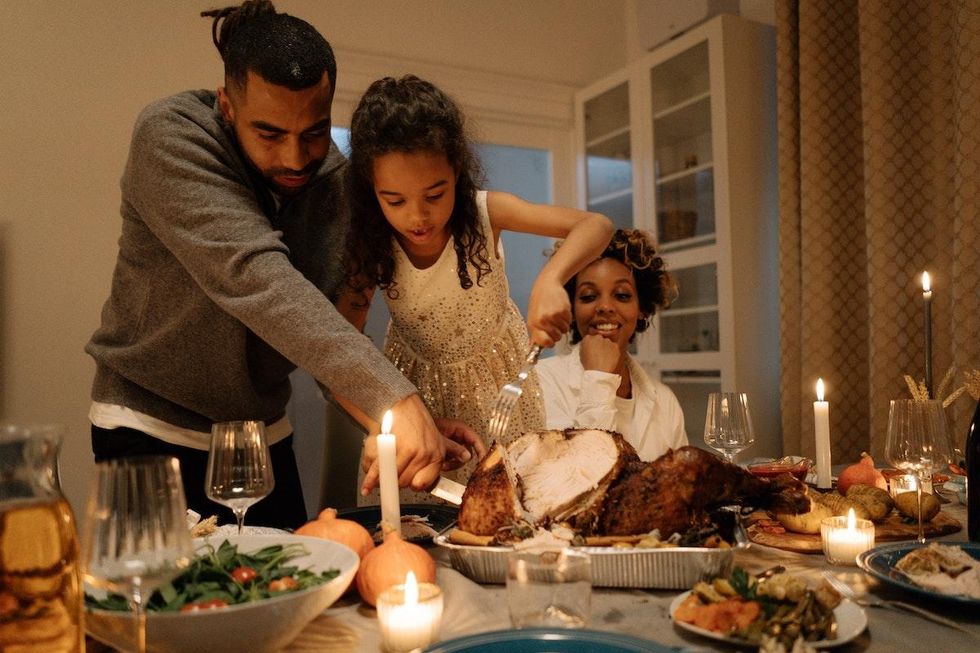
- Covering: depends on your desired result
- Cook time: around 15 minutes per 1 lb of meat
- Temperature: 165 degrees Fahrenheit
- Basting: every 15 minutes during the last hour of cooking, if desired
When it comes to cooking, remove the bird from your fridge for 45 minutes to an hour before cooking. Preheat your oven to 425 degrees Fahrenheit, but right before you stick the turkey inside, turn it down to 350. When it comes to the actual cooking process, there are a few different methods that you can try to ensure your turkey stays juicy.
Do You Cover A Turkey When Cooking?
The main reason behind covering a turkey is to slow down the cooking process and keep your turkey from drying out. You'll want the legs to cook longer than the breast because the meat is built differently in those different areas. You can separate the two (and remove the breast from the oven before you remove the legs) like Delish recommends, or cover the turkey breast with a tent of foil so that it cooks slower than the legs. You can also cover the bird and then remove the tinfoil for the last 30 minutes for crispy skin like Food Network recommends.
Allen actually prefers to cook her Thanksgiving turkey uncovered – it’s easier and more practical.
“You don't have to [cover the turkey] – it just depends on how you like your turkey,” she said. “I always put mine in uncovered, that way I can keep an eye on it and I can look how golden it's getting.”
How Long To Cook A Turkey
It’s recommended to your turkey for around 15 minutes per 1 lb of meat. Even if you abide by that guide, the most important thing is making sure the bird is fully cooked. You’ll want to have a meat thermometer since that’s the only way to tell if it’s cooked properly.
“The breast meat's gonna cook a little faster than the thigh meat, so it's super important to cook your turkey to 165 degrees Fahrenheit when it's all finished to have it be at a safe temperature to consume,” Allen said. “Test the turkey in the breast, and then the thigh, and a few different places and make sure you're not hitting bone, because the bone's gonna be hotter than the meat, so that will give you an inaccurate reading.”
She also recommends taking the bird out when its temperature reads 160 degrees Fahrenheit. Once it’s out, you can cover it with foil and let it rest on the counter. The foil will create an insulating layer of heat that will continue to cook the turkey and make up for the 5-degree difference. Let it rest for a half hour like this before carving it so that the juices can settle.
How To Baste A Turkey
When basting your bird (which is where you collect the drippings from the bottom of the pan with a baster and cover the turkey with them), you'll want to hold off until the last hour and then baste every 15 minutes, which is what A Fork's Tale recommends for a beautiful golden-brown color.
Allen doesn’t actively recommend basting since it can cause your oven (and turkey) to lose heat every time you open the door to baste, meaning the cooking process will take longer.
“I recommend doing an herb butter, that way all of the skin is smeared with grease, and it's going to get nice and golden and crispy, and you don't have to keep opening your oven,” she said. “You're losing heat, so it's just going to take longer for the bird to cook.”
If you’ve been wondering how to cook a turkey, it’s actually a lot simpler than people make it out to be. Once you’ve mastered these turkey tips, delve into the turkey recipes below to inspire your next Thanksgiving feast!
Thanksgiving Turkey Recipes
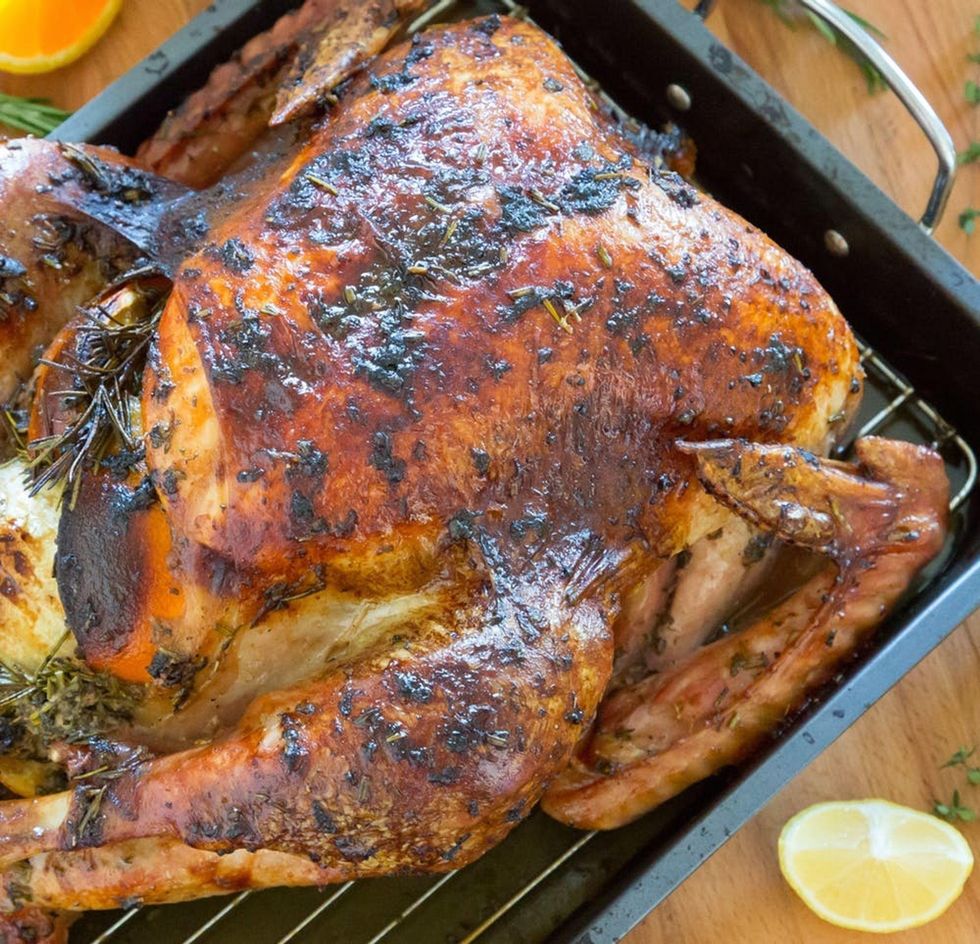
Foolproof Roast Turkey
The mix of woodsy herbs and citrus fruits as well as garlic, salt, and pepper give this Thanksgiving turkey recipe a delicious, full flavor. Whatever falls to the bottom of the pan with the drippings can also be turned into a gravy that will taste just as good! (via Brit + Co.)
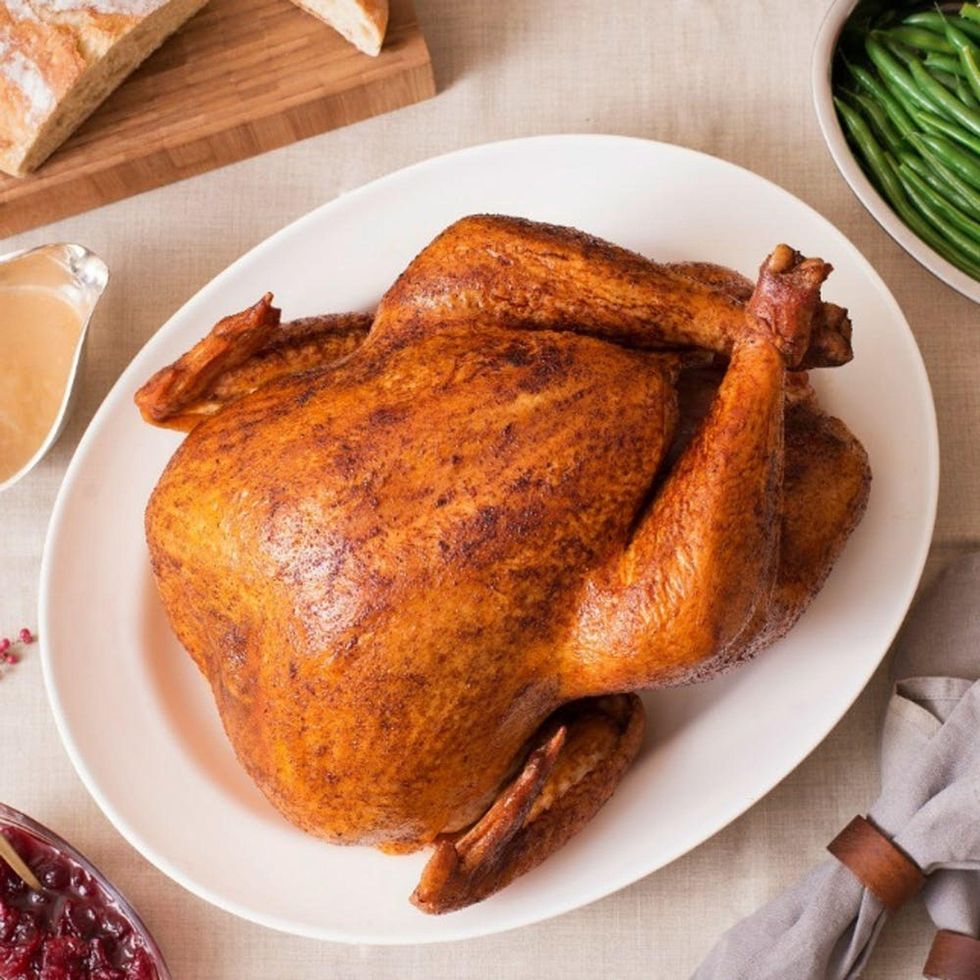
The Thanksgiving Turkey
If you've never cooked a turkey before, this recipe is a great place to start because it breaks down everything you need. The best place to start though? Buying the best turkey that you can afford so that you know the foundation of your meal is high-quality. (via Brit + Co.)
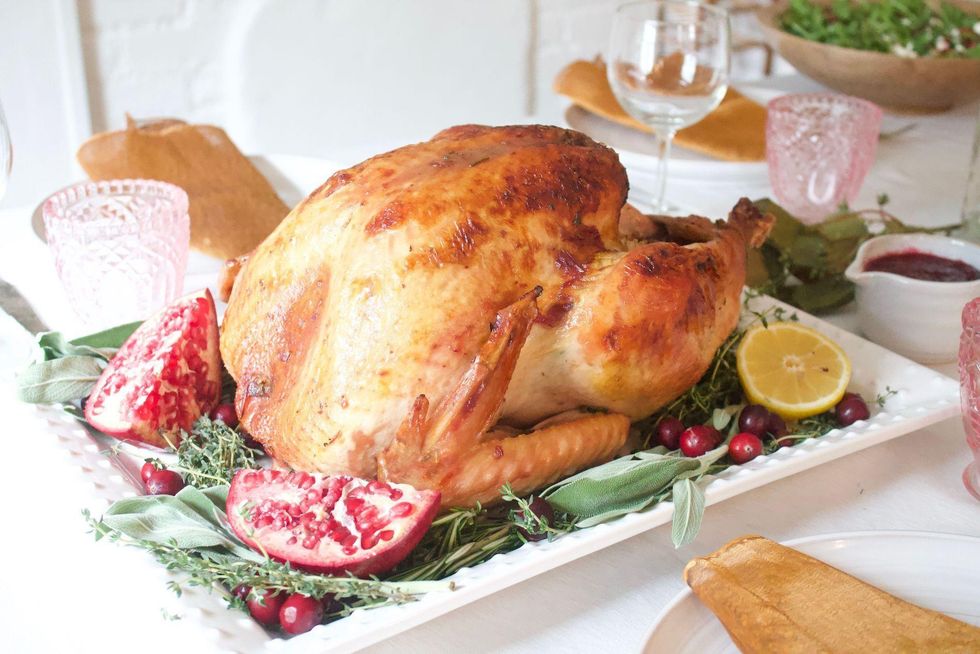
Cranberry Roast Turkey
The holiday season is also cranberry season, which makes a cranberry-maple glaze the perfect addition to your Thanksgiving dinner. Our mouths are literally watering. Don't forget to save some of the glaze to serve in a dish alongside the meal. (via Brit + Co.)
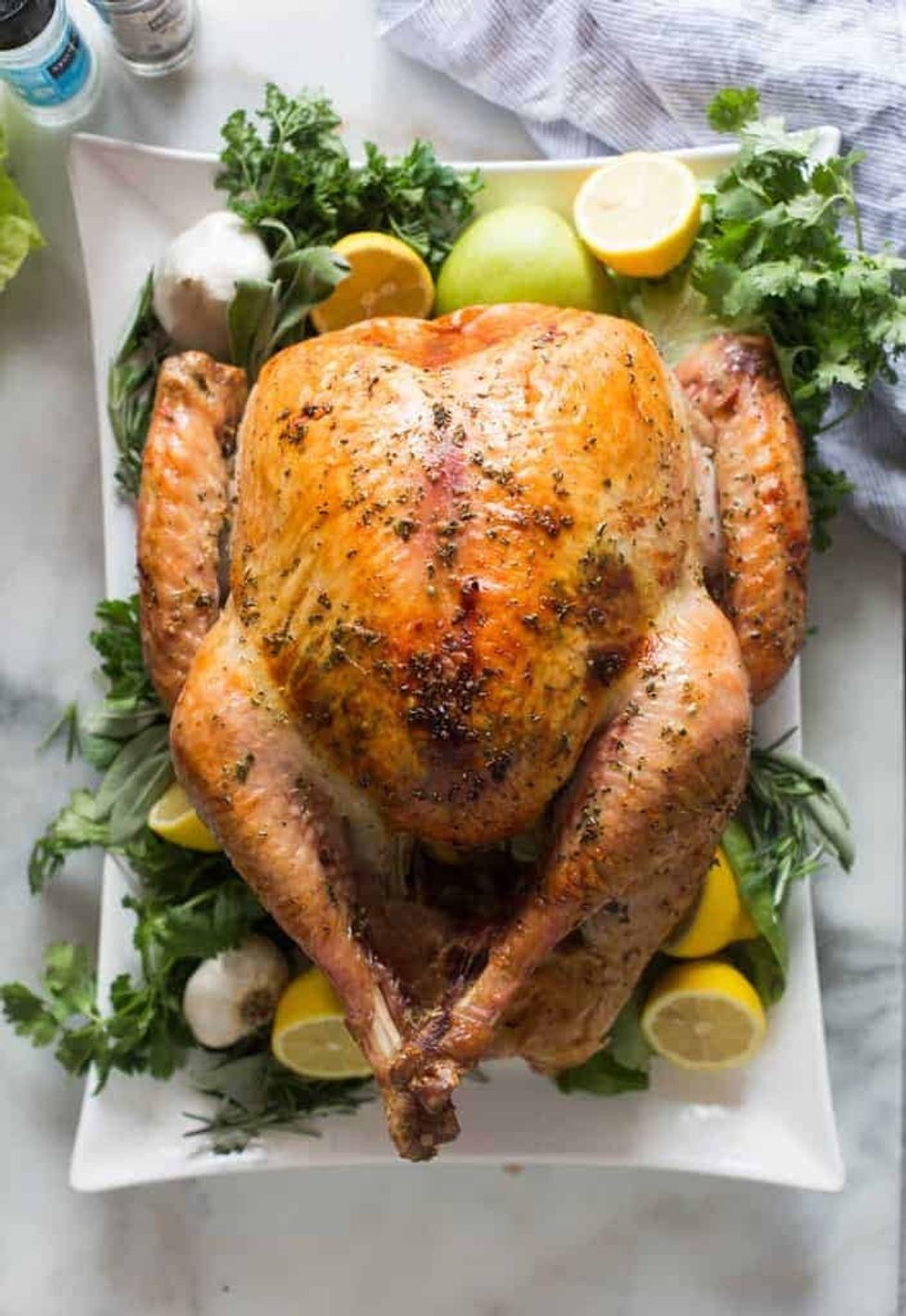
Easy, No-Fuss Thanksgiving Turkey
This simple turkey recipe was designed for a low-stress Thanksgiving. Lauren Allen gives even more prep, cooking, and serving tips that can help you achieve possibly the *best* turkey you've had in your life. (via Tastes Better from Scratch)
Do you have more tips on how to cook a turkey? Let us know in the comments and check out our Pinterest for more holiday cooking hacks!
Some quotes have been edited for clarity.
Brit + Co. may at times use affiliate links to promote products sold by others, but always offers genuine editorial recommendations.
This post has been updated with additional reporting by Meredith Holser.
0 Commentaires